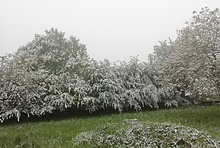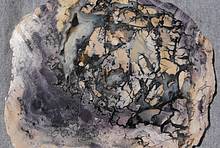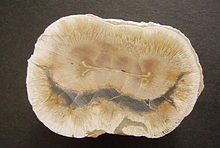Home PageAbout MindatThe Mindat ManualHistory of MindatCopyright StatusWho We AreContact UsAdvertise on Mindat
Donate to MindatCorporate SponsorshipSponsor a PageSponsored PagesMindat AdvertisersAdvertise on Mindat
Learning CenterWhat is a mineral?The most common minerals on earthInformation for EducatorsMindat ArticlesThe ElementsThe Rock H. Currier Digital LibraryGeologic Time
Minerals by PropertiesMinerals by ChemistryAdvanced Locality SearchRandom MineralRandom LocalitySearch by minIDLocalities Near MeSearch ArticlesSearch GlossaryMore Search Options
The Mindat ManualAdd a New PhotoRate PhotosLocality Edit ReportCoordinate Completion ReportAdd Glossary Item
Mining CompaniesStatisticsUsersMineral MuseumsClubs & OrganizationsMineral Shows & EventsThe Mindat DirectoryDevice SettingsThe Mineral Quiz
Photo SearchPhoto GalleriesSearch by ColorNew Photos TodayNew Photos YesterdayMembers' Photo GalleriesPast Photo of the Day GalleryPhotography
╳Discussions
💬 Home🔎 Search📅 LatestGroups
EducationOpen discussion area.Fakes & FraudsOpen discussion area.Field CollectingOpen discussion area.FossilsOpen discussion area.Gems and GemologyOpen discussion area.GeneralOpen discussion area.How to ContributeOpen discussion area.Identity HelpOpen discussion area.Improving Mindat.orgOpen discussion area.LocalitiesOpen discussion area.Lost and Stolen SpecimensOpen discussion area.MarketplaceOpen discussion area.MeteoritesOpen discussion area.Mindat ProductsOpen discussion area.Mineral ExchangesOpen discussion area.Mineral PhotographyOpen discussion area.Mineral ShowsOpen discussion area.Mineralogical ClassificationOpen discussion area.Mineralogy CourseOpen discussion area.MineralsOpen discussion area.Minerals and MuseumsOpen discussion area.PhotosOpen discussion area.Techniques for CollectorsOpen discussion area.The Rock H. Currier Digital LibraryOpen discussion area.UV MineralsOpen discussion area.Recent Images in Discussions
Mineralogical ClassificationIMA 2016-101 = staročeskéite
26th Oct 2018 09:49 UTCMarco E. Ciriotti Manager
▪ Pazout, R. & Sejkora, J. (2018): Staročeskéite, Ag0.70Pb1.60(Bi1.35Sb1.35)Σ2.70S6, from Kutná Hora, Czech Republic, a new member of the lillianite homologous series. Mineralogical Magazine, 82, 993-1005.
Abstract:
A new mineral species, staročeskéite, ideally Ag0.70Pb1.60(Bi1.35Sb1.35)Σ2.70S6, has been found at Kutná Hora ore district, Czech Republic. The mineral occurs in the late-stage Bi-mineralization associated with other lillianite homologues (gustavite, terrywallaceite, vikingite, treasurite, eskimoite and Bi-rich andorite-group minerals) and other bismuth sulfosalts (izoklakeite, cosalite and Bi-rich jamesonite) in quartz gangue. The mineral occurs as lath shaped crystals or anhedral grains up to 80 µm × 70 µm, growing together in aggregates up to 200 µm × 150 µm across. Staročeskéite is steel-grey in colour and has a metallic lustre, the calculated density is 6.185 g/cm3. In reflected light staročeskéite is greyish white; bireflectance and pleochroism are weak with greyish tints. Anisotropy is weak to medium with grey to bluish grey rotation tints. Internal reflections were not observed. The empirical formula based on electron probe microanalyses and calculated on 11 apfu is: (Ag0.68Cu0.01)Σ0.69(Pb1.56Fe0.01Cd0.01)Σ1.58(Bi1.32Sb1.37)Σ2.69(S6.04Se0.01)Σ6.05. The ideal formula is Ag0.70Pb1.60(Bi1.35Sb1.35)Σ2.70S6, which requires Ag 7.22, Pb 31.70, Bi 26.97, Sb 15.72 and S 18.39 wt.%, total 100.00 wt.%. Staročeskéite is a member of the lillianite homologous series with N = 4. Unlike gustavite and terrywallaceite, staročeskéite, similarly to lillianite, is orthorhombic, space group Cmcm, with a = 4.2539(8), b = 13.3094(8), c = 19.625(1) Å, V = 1111.1(2) Å3 and Z = 4. The structure of staročeskéite contains four sulfur sites and three metal sites: one pure Pb site and two mixed sites, M1 (0.52Bi + 0.356Ag + 0.124Sb) and M2 (0.601Sb + 0.259Pb + 0.14Bi). The mineral is characterized by the Bi:Sb ratio 1:1 (Bi/(Bi + Sb) = 0.50) and the Ag+ + Bi3+, Sb3+ ↔ 2 Pb2+ substitution (L%) equal to 70%. Thus the mineral lies between two series of the lillianite structures with N = 4, between the lillianite–gustavite series and the andorite series.




Mindat.org is an outreach project of the Hudson Institute of Mineralogy, a 501(c)(3) not-for-profit organization.
Copyright © mindat.org and the Hudson Institute of Mineralogy 1993-2024, except where stated. Most political location boundaries are © OpenStreetMap contributors. Mindat.org relies on the contributions of thousands of members and supporters. Founded in 2000 by Jolyon Ralph.
Privacy Policy - Terms & Conditions - Contact Us / DMCA issues - Report a bug/vulnerability Current server date and time: April 23, 2024 21:55:07
Copyright © mindat.org and the Hudson Institute of Mineralogy 1993-2024, except where stated. Most political location boundaries are © OpenStreetMap contributors. Mindat.org relies on the contributions of thousands of members and supporters. Founded in 2000 by Jolyon Ralph.
Privacy Policy - Terms & Conditions - Contact Us / DMCA issues - Report a bug/vulnerability Current server date and time: April 23, 2024 21:55:07











